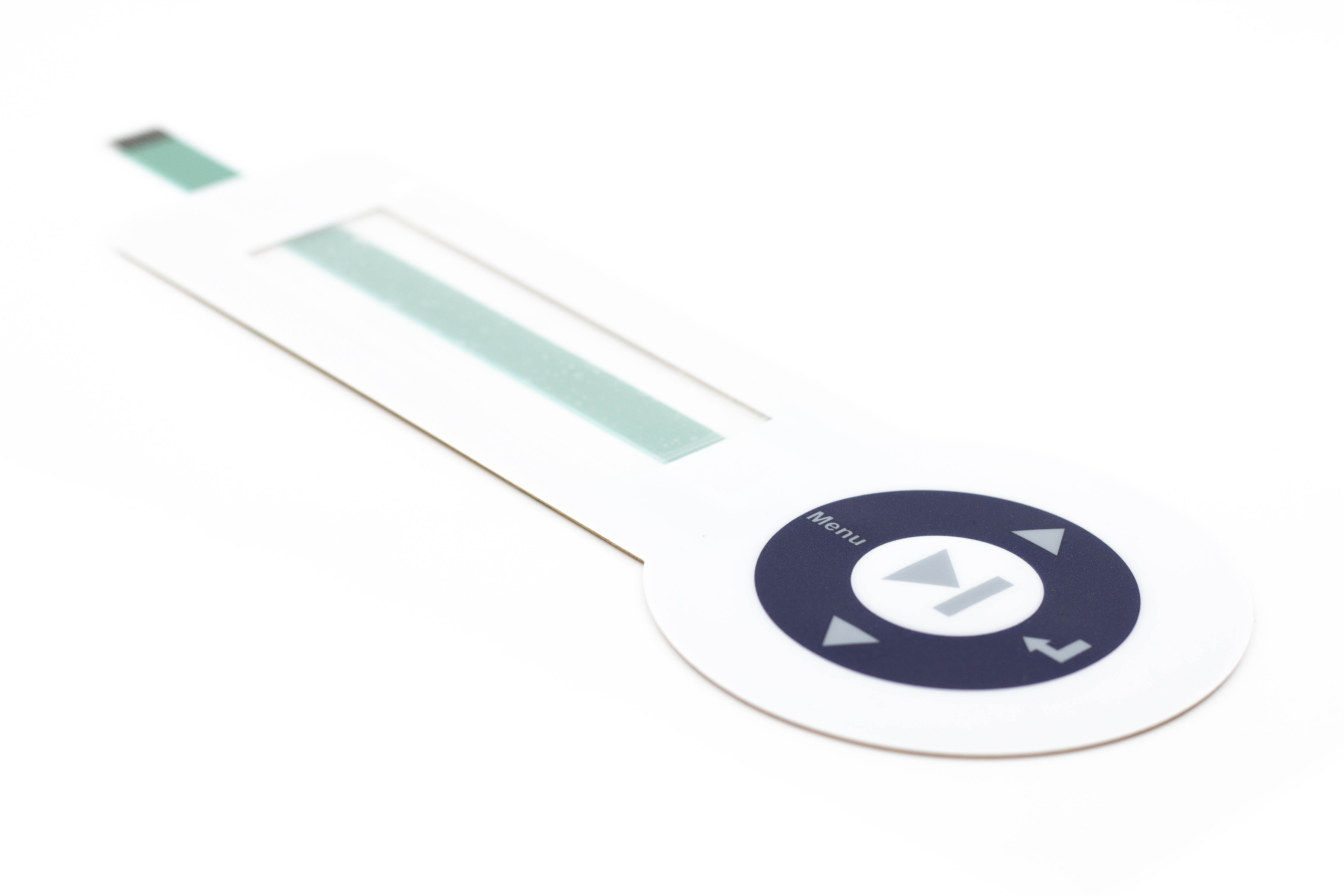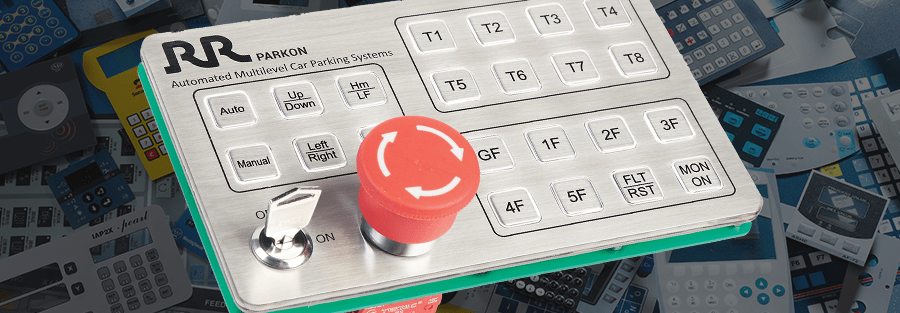Why Engineers Pick Membrane Switches for Their High Performance and Longevity
Why Engineers Pick Membrane Switches for Their High Performance and Longevity
Blog Article
Membrane Switches Explained: A Comprehensive Guide to Their Advantages
Membrane layer switches represent a flexible and sophisticated option for developing individual interfaces throughout a range of markets. As industries progressively look for reliable and effective control user interfaces, understanding the details benefits and applications of membrane layer changes becomes crucial.
What Are Membrane Buttons?

When pressure is related to the membrane layer button, the layers make call, finishing an electric circuit. This easy system enables a large range of applications, from consumer electronic devices to commercial equipment. Membrane layer buttons are often designed to be waterproof and resistant to dust and impurities, making them ideal for environments where sturdiness is crucial.
Additionally, the adaptability of the products utilized in membrane switches over promotes ingenious layouts that can adapt various shapes and measurements. This versatility adds to their appeal in varied areas, consisting of clinical tools, auto controls, and home appliances. Overall, membrane layer switches represent a vital element in modern-day user interface innovation, bridging the space in between users and digital systems.
Secret Benefits of Membrane Buttons
Among the myriad of interface choices available, membrane layer switches stand out for their one-of-a-kind mix of advantages. Among the key benefits is their portable and light-weight layout, which enables combination right into a large array of devices without including considerable mass. This is particularly beneficial in applications where area is restricted.
In addition, membrane changes offer longevity and resistance to environmental aspects. They are typically constructed with materials that can stand up to dampness, dirt, and various chemicals, making them ideal for severe conditions. This sturdiness adds to a much longer lifespan contrasted to conventional mechanical buttons.
An additional substantial benefit is the convenience in modification. Membrane layer buttons can be published with different graphics, colors, and structures, permitting tailored designs that meet specific branding or functional needs. This flexibility extends to the number of layers and circuit options, providing engineers with several setups.
Furthermore, the tactile feedback supplied by some membrane layer switches over enhances user experience, making them a lot more intuitive to operate. Last but not least, the convenience of cleansing and maintenance better strengthens membrane switches as a sensible option in both consumer and commercial applications. Membrane Switches. Generally, these key benefits make them a favored solution for lots of designers and manufacturers
Applications in Various Industries
How do membrane switches locate their place throughout diverse markets? Their flexibility and capability make them essential parts in industries ranging from healthcare to consumer electronic devices. In medical tools, membrane switches are made use of for their ease of cleansing and resistance to contamination, making certain hygiene in atmospheres where sterility is crucial.
In the customer electronic devices industry, these switches supply streamlined, easy to use user interfaces that enhance product aesthetics while preserving sturdiness versus damage. Automotive applications take advantage of membrane layer switches over as well, where they are utilized in control panels and control panels, using reputable efficiency in tough conditions.
Furthermore, industrial machinery utilizes membrane buttons for control board as a result of their effectiveness, capability to hold up against severe environments, and adjustable styles that deal with specific functional requirements. The food market leverages membrane switches for their ease of use and resistance to spills, making sure functional performance in busy setups.
Inevitably, the adaptability of membrane layer switches over throughout these varied applications highlights their essential role in modern technology, enhancing user communication while fulfilling industry-specific needs. Their continued evolution promises additional integration right into arising areas and cutting-edge products.
Design and Customization Alternatives
The style and customization alternatives readily available for membrane switches are crucial for customizing interfaces to fulfill certain individual needs and visual choices. These switches can be made in different shapes, dimensions, and layouts, permitting smooth combination right into diverse applications. The flexibility in layout implies that producers can develop special interfaces that boost usability and keep brand identification.
Personalized structures, useful site graphics, and colors can be related to the surface area of the membrane button, supplying an opportunity for branding and individual engagement. Furthermore, backlighting choices, such as LED lighting, can be included to improve visibility in low-light problems, thus improving functionality.
Useful elements can likewise be customized, consisting of responsive feedback and actuation force, which can be gotten used to match different individual communications. The option of materials, such as polyester or polycarbonate, enables variants in toughness and ecological resistance, accommodating the details needs of different industries.
Eventually, the extensive style and personalization capacities of membrane switches enable companies to create user-friendly and aesthetically appealing user interfaces, guaranteeing that their Discover More items satisfy both functional and aesthetic requirements effectively. Membrane Switches.
Factors To Consider for Application
Carrying out membrane layer switches over requires cautious consideration of different factors to make certain ideal functionality and customer experience. One of the primary factors to consider is the designated application atmosphere. Factors such as direct exposure to moisture, extreme temperatures, and chemical materials can substantially influence the button's performance and long life. Selecting products that withstand these conditions is vital.

An additional vital element is the button's design and design. Guaranteeing that the tactile responses and actuation pressure straighten with individual expectations improves use. Carrying out individual screening can supply useful understandings right into the optimum design.
Additionally, compatibility with digital elements must be assessed. The switch's wiring ought to align with the overall system style, ensuring trustworthy signal transmission and lessening disturbance.
Furthermore, production approaches and prices should be reviewed. The selection between custom layouts and conventional designs can lead and influence both spending plan time.
Last but not least, take into consideration repair and maintenance. Membrane layer switches may require specific cleaning and treatment procedures to maintain their look and capability over time. By addressing these factors to consider, organizations can implement membrane layer switches that fulfill their functional needs while giving a favorable individual experience.

Conclusion
In verdict, membrane changes stand for a versatile and sturdy control user interface suitable for a broad variety of applications across several sectors. Membrane Switches. As innovation continues to evolve, the relevance of membrane layer switches in modern tools stays considerable, using both functionality and visual appeal.
Membrane switches over click site stand for a flexible and sophisticated remedy for producing customer interfaces across a variety of industries.Understanding the basic components of contemporary digital interfaces, membrane layer switches are a kind of customer interface tool that are composed of flexible, slim layers of material. Generally, membrane switches over stand for a vital element in modern customer interface modern technology, connecting the gap in between users and electronic systems.
Among the myriad of individual interface alternatives readily available, membrane switches stand out for their unique mix of advantages.The layout and personalization choices offered for membrane layer buttons are crucial for tailoring interfaces to satisfy details customer demands and aesthetic preferences.
Report this page